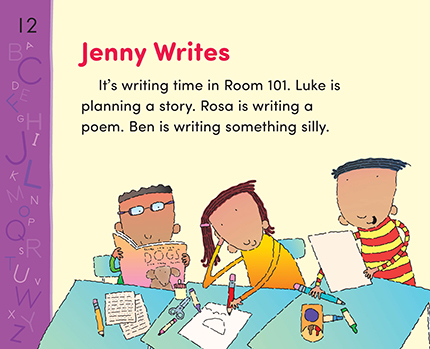Page 12 from

Start-Up Activity
Read the story “Jenny Writes” on pages 12–21 in the handbook. Then read it again, inviting students to repeat Jenny’s line, “What can I write?” Next, ask students to recall things they have written. Help them see the similarities between their writing and what Luke, Rosa, Ben, and Jenny are writing.
Enrichment Activity: Ask students to plan presentations about a topic that is important to them. Give them some general guidelines for their presentations—explain why the topic is important, give one or two interesting facts about it, include pictures or objects, and so on. Also be sure to review with them “Show-and-Share Tips” on page 79 in preparation for the presentations.
Think About It
“Nonsense wakes up the brain cells.”
—Dr. Seuss

Start-Up Activity
Read the story “Jenny Writes” on pages 12–21 in the handbook. Then read it again, inviting students to repeat Jenny’s line, “What can I write?” Next, ask students to recall things they have written. Help them see the similarities between their writing and what Luke, Rosa, Ben, and Jenny are writing.
Enrichment Activity: Ask students to plan presentations about a topic that is important to them. Give them some general guidelines for their presentations—explain why the topic is important, give one or two interesting facts about it, include pictures or objects, and so on. Also be sure to review with them “Show-and-Share Tips” on page 79 in preparation for the presentations.
Think About It
“Nonsense wakes up the brain cells.”
—Dr. Seuss